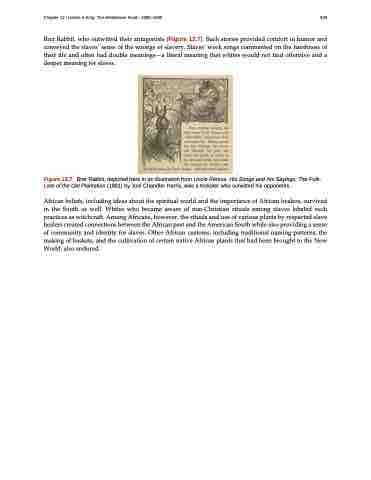Page 349 - US History
P. 349
Chapter 12 | Cotton is King: The Antebellum South, 1800–1860 339
Brer Rabbit, who outwitted their antagonists (Figure 12.7). Such stories provided comfort in humor and conveyed the slaves’ sense of the wrongs of slavery. Slaves’ work songs commented on the harshness of their life and often had double meanings—a literal meaning that whites would not find offensive and a deeper meaning for slaves.
Figure 12.7 Brer Rabbit, depicted here in an illustration from Uncle Remus, His Songs and His Sayings: The Folk- Lore of the Old Plantation (1881) by Joel Chandler Harris, was a trickster who outwitted his opponents.
African beliefs, including ideas about the spiritual world and the importance of African healers, survived in the South as well. Whites who became aware of non-Christian rituals among slaves labeled such practices as witchcraft. Among Africans, however, the rituals and use of various plants by respected slave healers created connections between the African past and the American South while also providing a sense of community and identity for slaves. Other African customs, including traditional naming patterns, the making of baskets, and the cultivation of certain native African plants that had been brought to the New World, also endured.


